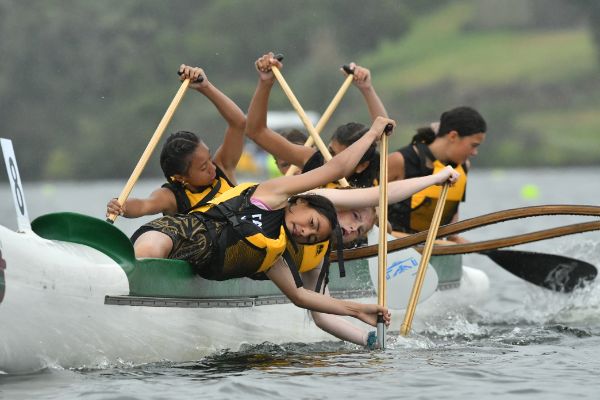
Waka ama (New Zealand)
- Name of sport (game): waka ama
- Place of practice (continent, state, nation):
New Zealand
- History:
Waka ama have been widely used in the smaller islands of the Pacific for centuries, but had become very rare in New Zealand by the time the first European explorers arrived. Although there were occasional sightings of waka hourua (double-hulled canoes), used for fishing and as work platforms, waka ama were seldom noted.
When British explorer James Cook was passing Māhia on the North Island’s east coast on his first voyage to the Pacific in 1769, his ship was approached by a number of canoes. The artist Sydney Parkinson noted, ‘Several of the canoes had outriggers; and one of them had a very curious piece of ornamental carving at the head of it.’ On Cook’s second voyage, in 1773, more canoes were seen at Queen Charlotte Sound. Georg Forster recorded that some ‘had an outrigger, or narrow piece of plank, fixed parallel to one side of the canoe by means of transverse poles, to prevent their oversetting.’ However, both men noted that outrigger canoes were relatively rare even at the time, and later observers such as missionaries did not mention them at all.
Physical evidence of waka ama in New Zealand is limited to a single, very old, canoe dug out of swampy ground on the Taieri plains, Otago, about 1895. Its hull shape is unlike any other known Māori canoe, and it appears to have been made with stone tools. The only known example of an ama (outrigger) was found at Moncks Cave, near Sumner, in the late 19th century.
The absence of waka ama may be due to the many large trees in New Zealand compared with other Pacific islands. Unlike their Polynesian forebears, Māori waka builders were able to build hulls that were wide and stable, and did not need ama to help keep them upright. - Description:
Waka ama is the New Zealand term for the sport of outrigger canoeing. The name distinguishes an outrigger canoe from other types of waka (canoes).
Most Māori waka, such as waka taua (war canoes), waka tīwai (river canoes) and waka tētē (sea-fishing canoes), have a single hull, carved from a tree trunk broad enough that the beam (width) of the waka is greater than the depth of the hull. The beam of a waka ama hull is narrower than its depth, and requires an outrigger float to prevent capsizing. This is called an ama or amatiatia, and is lashed to two crossbeams, known as kīato, which are lashed in turn to the hull. The ama is usually attached to the left-hand side of the hull.
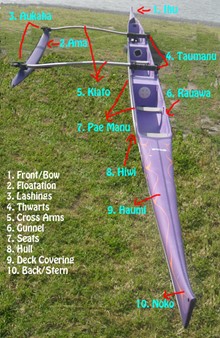
Source: https://wikieducator.org/NZ/NCEA/Level2/PhysicalEducation/WakaAma/Equipment - Current status:
Waka ama are widely used in the Pacific for fishing, carrying goods, travel and racing. Waka racing is a popular sport in Hawaii and French Polynesia.
In New Zealand there was a resurgence of interest in waka ama in the late 1980s, after the double-hulled canoe Hawaikinui was built and sailed from Tahiti to New Zealand. Clubs were set up around the country, and in 1987 a national body was formed. National championships have been held annually since 1989. Since 1990 New Zealand has sent teams to the World Va’a (waka) Championships every two years. New Zealand teams have become world champions in some divisions.
In 2012 the national body, Waka Ama NZ, represented over 1,000 members in 43 clubs.
Most waka ama today are built out of composite materials such as fibreglass. Designers try to make them faster and more responsive. Waka ama clubs often emphasise Māori language and customs associated with waka building and paddling. Waka ama are mostly used for racing, but some people also use them for fishing, or just for fun.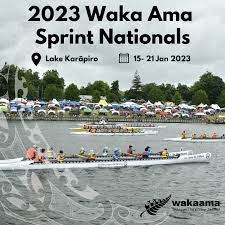

- Importance (for practitioners, communities etc.):
The book about waka ama:
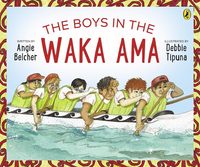
This story follows a team of six boys training together for a waka ama competition, from their early morning training sessions to the day of the big race. We see the dedication and the determination on their faces showing their passion for the sport, and witness the necessary teamwork and whanau support that leads to their success.
Waka ama, outrigger canoe racing, is a Polynesian sport growing in popularity in New Zealand. Integral to the sport are Māori culture and values such as Kotahitanga - inclusivity, and Whanaungatanga - belonging, identity and collective strength. This story is a great way to demonstrate and perhaps initiate a discussion on the values of teamwork, dedication, leadership and respecting Aotearoa's cultures - all values important to both the New Zealand Early Childhood and Primary curriculums. Therefore, this book would not only be great addition to the home library but also an excellent resource for teachers. - Contacts:
International Va’a Federation
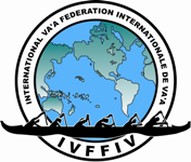
Web: http://www.ivfiv.org/
E-mail:This email address is being protected from spambots. You need JavaScript enabled to view it.
Fb: https://www.facebook.com/InternationalVaaFederation
YouTube: https://www.youtube.com/channel/UCbm78wz5yVJrWfVLO6nacNA
Instagram: https://www.instagram.com/vaainternational/Wakaama
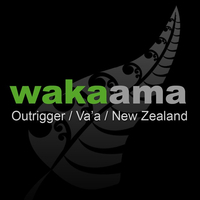
PO Box 42036 Orakei 1745
Auckland
Physical Address
Hyundai Marine Sports Centre
10 Tamaki Drive Orakei
Auckland 1071
Web: https://wakaama.co.nz/
E-mail:This email address is being protected from spambots. You need JavaScript enabled to view it.
Fb: https://www.facebook.com/wakaama/
Instagram: https://www.instagram.com/wakaamanz/ - Sources of information :
Articles:
https://www.nzherald.co.nz/rotorua-daily-post/news/record-number-of-paddlers-in-action-at-national-waka-ama-sprint-championships/6L5P3IF3QPJSQUG6OPXXINWA2Y/
https://sportnz.org.nz/resources/growth-of-waka-ama/
https://www.youtube.com/watch?v=KbQe9GLx_h4
https://www.youtube.com/watch?v=cdIDro_vv_0
https://www.youtube.com/watch?v=Mp7aTAXvTg4&t=27s
https://www.youtube.com/watch?v=jx4-K3VtzR8Video:
https://www.youtube.com/watch?v=Mp7aTAXvTg4&t=1sThe information contained in the article comes from the following sources:
https://teara.govt.nz/en/waka-ama-outrigger-canoeing
Hoturoa Barclay-Kerr, 'Waka ama – outrigger canoeing - Traditional waka ama', Te Ara - the Encyclopedia of New Zealand, http://www.TeAra.govt.nz/en/waka-ama-outrigger-canoeing/page-1
https://www.pinkshirtday.org.nz/stories/story/123/the-boys-in-the-waka-amaSource of photos used in this article and gallery:
https://www.nzherald.co.nz/rotorua-daily-post/news/record-number-of-paddlers-in-action-at-national-waka-ama-sprint-championships/6L5P3IF3QPJSQUG6OPXXINWA2Y/
https://sportnz.org.nz/resources/growth-of-waka-ama/
https://www.scoop.co.nz/stories/CU2101/S00098/day-3-waka-ama-sprint-championships-2021.htm
https://www.maritimenz.govt.nz/content/recreational/waka.asp
https://www.cambridge.co.nz/events/tpoti-regional-waka-ama-sprint-regatta/
https://teara.govt.nz/en/waka-ama-outrigger-canoeing
https://ngaitahu.iwi.nz/our_stories/hiwa-i-te-rangi-tk83/
https://kellyrd.co.nz/cambridge-events/waka-ama-sprint-nationals/ - Gallery:

